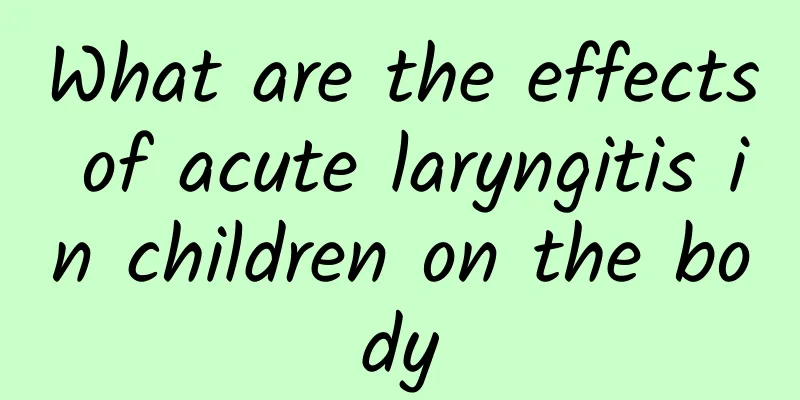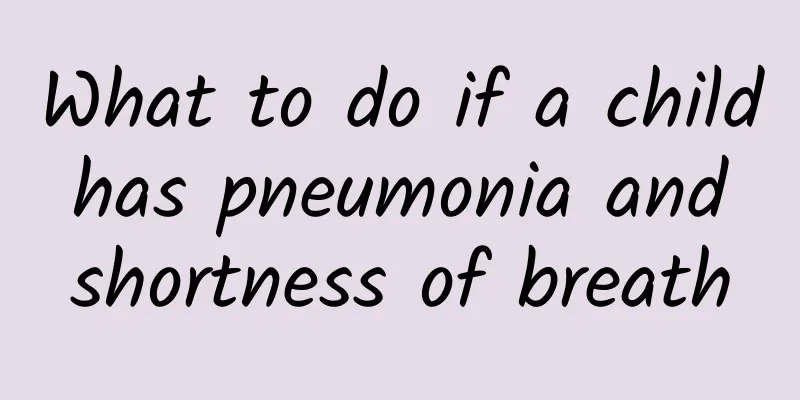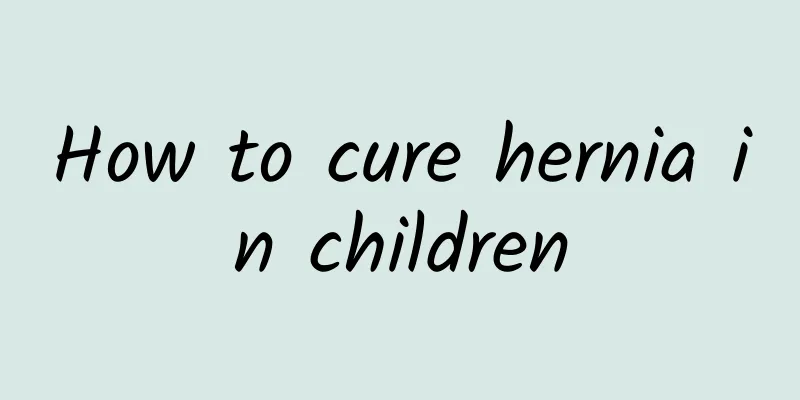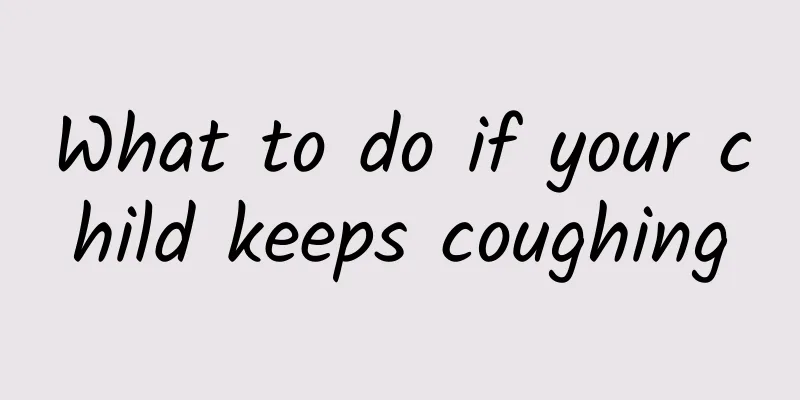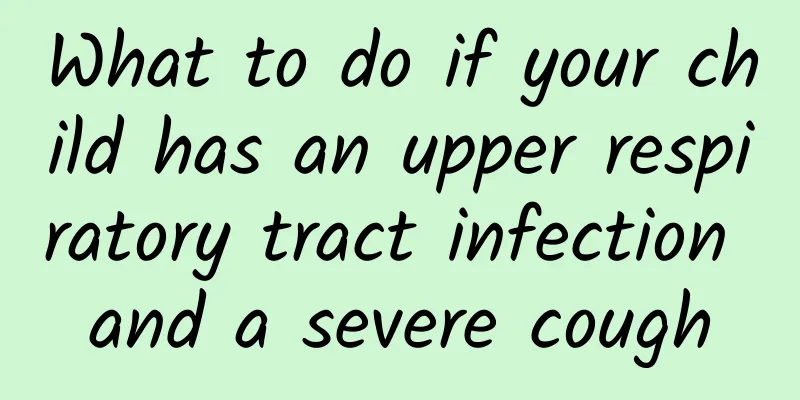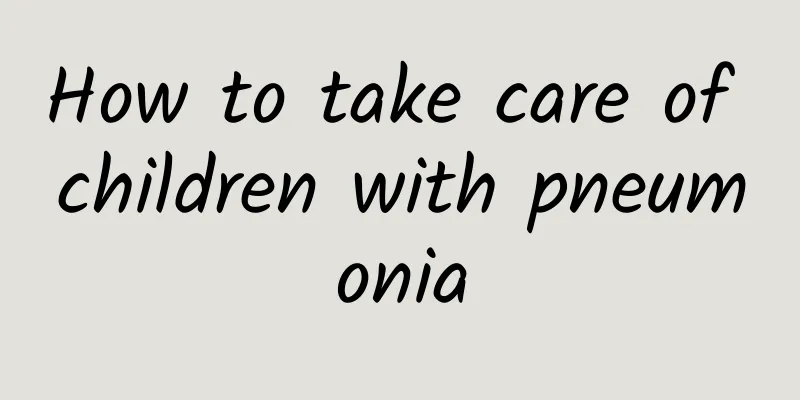Is hand, foot and mouth disease contagious to adults? Can adults be infected with hand, foot and mouth disease?
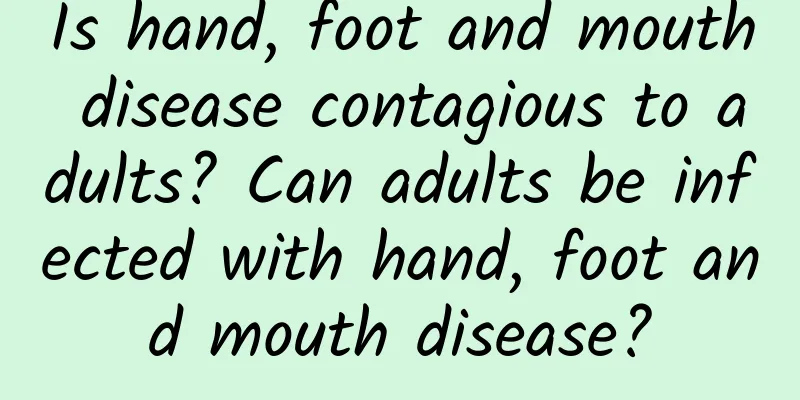
|
Children's immunity is generally poor, and many children do not know how to pay attention to hygiene, so they are prone to illness. In the season when infectious diseases are prevalent, children are prone to hand, foot and mouth disease. At this time, parents should pay attention to care for them. Some people worry that it will be transmitted to adults. Is hand, foot and mouth disease contagious to adults? Can adults be infected with hand, foot and mouth disease? 1. Is hand, foot and mouth disease contagious to adults? Hand, foot and mouth disease is an infectious disease caused by enterovirus. It is highly contagious and can occur all year round. People of every age group have the chance to be infected with hand, foot and mouth disease, so adults can also be infected with hand, foot and mouth disease, and it may also be transmitted to children. 2. What is the source of infection of hand, foot and mouth disease? The sources of infection of hand, foot and mouth disease are patients and latently infected persons. During the epidemic period, patients are the main source of infection. Patients excrete the virus from the throat 1 to 2 weeks after onset, and from the feces about 3 to 5 weeks after onset. The herpes fluid contains a large amount of virus, which overflows when ulcerated. Virus carriers and mild sporadic cases are the main sources of infection during the inter-epidemic and epidemic periods. 3. Transmission of hand, foot and mouth disease Hand, foot and mouth disease is transmitted in various ways, mainly through close contact between people. The virus can be transmitted indirectly through hands, towels, handkerchiefs, tooth cups, toys, eating utensils, milk utensils, bedding, underwear, etc. contaminated with saliva, herpes fluid, feces, etc.; the virus in the patient's throat secretions and saliva can be transmitted through droplets; if it comes into contact with water sources contaminated by the virus, it can also be infected through water; cross-infection in outpatient clinics and unqualified disinfection of oral instruments are also one of the causes of transmission. 4. Who are the susceptible groups? People are generally susceptible to enterovirus that causes hand, foot and mouth disease, and can acquire immunity after infection. Since antibodies lack cross-protection after infection with different pathogens, people can be repeatedly infected. Most adults who become ill have acquired corresponding antibodies through latent infection. Patients with hand, foot and mouth disease are mainly preschool children, especially those aged ≤3 years old, with the highest incidence rate. 5. How to prevent hand, foot and mouth disease 1. If a sick child is found, he or she should be isolated, observed and treated. Those who have contact with the child should be disinfected regularly to avoid infecting healthy children, and children in the same class should be screened for the virus. 2. Always pay attention to the hands, feet, and mouth of children. Kindergartens should conduct morning checkups on children every day, measure their body temperature, and check their hands, feet, and mouth. If a child has small herpes, they should be checked in time to rule it out. If it is not this disease, the herpes should be treated in time. 3. Children's underwear, bed sheets, and pillowcases should be changed and washed frequently to keep them clean. Clothes should be soft, loose, and comfortable. Clothes and quilts should be frequently ventilated and exposed to the sun for disinfection. Toys that children often play with should be cleaned and disinfected daily. 4. Educate children to wash their hands frequently, especially before meals and after defecation. Be sure to use soap or hand sanitizer to thoroughly clean their hands, develop a good habit of washing hands, and avoid bacterial infection. 5. During the virus epidemic, you should stay at home or in places with clean and fresh air more often, and avoid going to crowded public places. Because public places have a large flow of people and the air is not circulating, children's antiviral ability is poor, which creates a good environment for virus invasion. 6. How to care 1. Disinfection and isolation Once the baby is found to be infected with hand, foot and mouth disease, he should seek medical treatment in time and avoid contact with the outside world. Generally, he needs to be isolated for 2 weeks until the fever and rash subside and the blisters are scabbed. The items used by the baby should be thoroughly disinfected. They can be soaked in chlorine-containing disinfectants. Items that are not suitable for soaking can be exposed to the sun. The baby's room should be ventilated regularly to keep the air fresh, circulating, and the temperature appropriate. Families with conditions can use lactic acid fumigation for air disinfection every day. Reduce the number of people entering and leaving the baby's room, prohibit smoking, prevent air pollution, and avoid secondary infection. 2. Oral care Babies may refuse to eat, drool, cry and stay awake due to oral pain. Keep the baby's mouth clean and rinse the mouth with saline before and after meals. For babies who cannot rinse their mouths, you can use a cotton swab dipped in saline to gently clean the mouth. You can apply vitamin B2 powder directly to the oral erosion area, or apply cod liver oil, or take vitamin B2 and vitamin C orally, supplemented by ultrasonic atomization inhalation, to relieve pain, promote early healing of erosion, and prevent secondary bacterial infection. 3. Rash care 1. Baby's clothes and bedding should be clean, comfortable, soft, and changed frequently. 2. Cut your baby's nails short and wrap your baby's hands if necessary to prevent scratching the rash. 3. For babies with rashes on their buttocks, their urine and feces should be cleaned at all times to keep their buttocks clean and dry. 4. In the early stage of skin rash on the hands and feet, you can apply calamine lotion. When herpes is formed or ruptured, apply 0.5% iodine tincture. 5. Pay attention to keep your skin clean to prevent secondary infection. 4. Pay attention to cooling down Hand, foot and mouth disease in children is generally a low-grade or moderate fever, and no special treatment is required. You can let your baby drink more water. For babies with a body temperature between 37.5℃ and 38.5℃, physical cooling such as heat dissipation, drinking more warm water, and taking a warm bath should be given; change clothes in time during the fever reduction period and after sweating to prevent cold. If the high fever persists, medication should be used to reduce the temperature as prescribed by the doctor. |
>>: How to treat cough caused by allergic rhinitis in babies
Recommend
What is the cause of Hirschsprung's disease?
The main cause of Hirschsprung's disease is t...
Is hand, foot and mouth disease in children highly contagious? Six ways to prevent hand, foot and mouth disease in children
Many parents today are worried about the hand, fo...
Why does jaundice increase again after it has subsided?
Why does jaundice increase again after it has sub...
Causes of nephrotic syndrome in children
The occurrence of nephrotic syndrome in children ...
Are children's cough patches useful? Are children's cough patches really effective?
Parents will be anxious when their children show ...
Introduction to the characteristics of phenylketonuria
What is the brief introduction to the characteris...
What to do if your 10-month-old baby has a runny nose? Take good care of him
Many new mothers have no experience in taking car...
How to judge diarrhea in children? How to judge diarrhea in children?
Many parents think that children with diarrhea ar...
What are the cough medicines for children?
What are some common cough medicines for children...
Treatment of hand, foot and mouth disease in pregnant women What should pregnant women do if they have hand, foot and mouth disease
Nowadays, there are more and more female diseases...
What causes hand, foot and mouth disease?
Hand, foot and mouth disease is a common childhoo...
Does hand, foot and mouth disease require hospitalization? What are the indications for hospitalization for hand, foot and mouth disease?
Hand, foot and mouth disease is prone to break ou...
What are the benefits of vegetarianism to the body
Choosing a vegetarian diet can indeed bring many ...
What is the reason for the white spots on the baby's face? Beware of 3 skin diseases when white spots appear on the baby's face
When parents find small white spots on their chil...
What are the causes of influenza? How is influenza transmitted?
Flu is caused by influenza virus, which belongs t...
